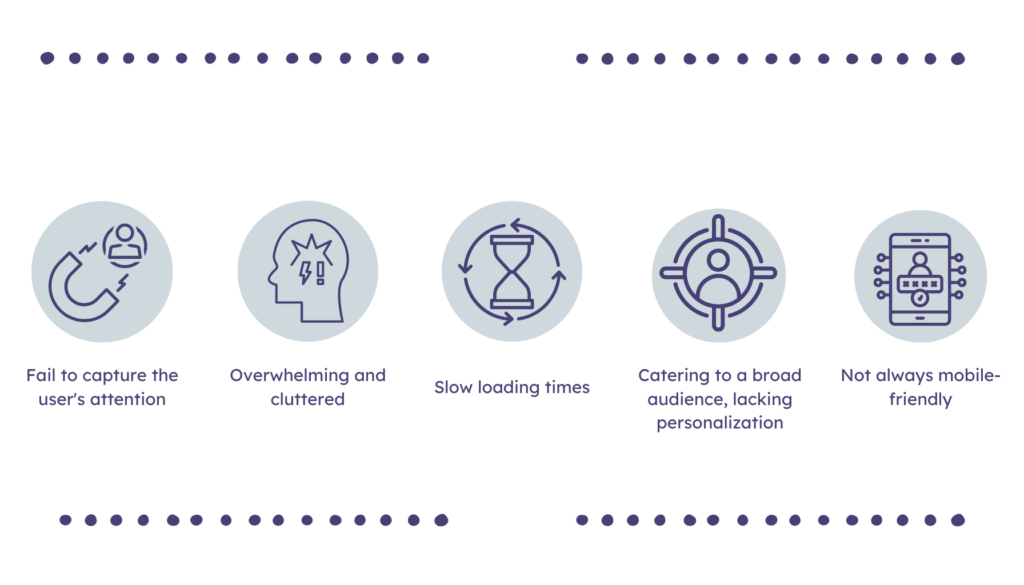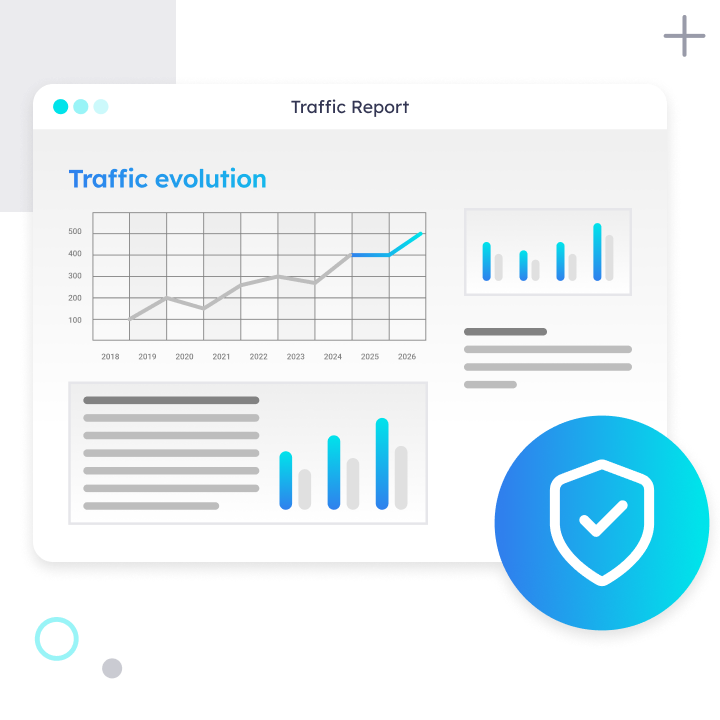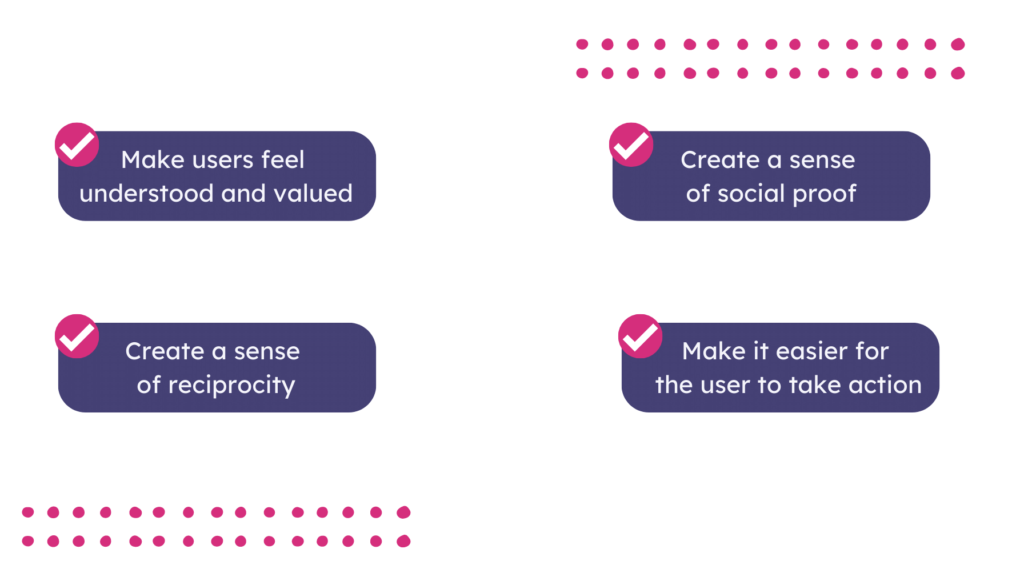
In the world of conversion rate optimization (CRO), the strategies that worked a few years ago may not necessarily be effective today. This series of blog posts explores why CRO trends, like A/B testing, traditional landing pages, pop-ups, and overlays are dying and how we can adapt to continue driving conversions successfully.
Traditional landing pages have long been a staple of CRO strategies, but they are not without their flaws. In recent years, we are seeing a shift away from traditional landing pages and toward more dynamic and interactive experiences that encourage users to stay on our websites for longer, interact more deeply with our content, and ultimately convert at a higher rate.
We’ll delve into the reasons behind the shift away from traditional landing pages and explore some of the alternative approaches that businesses are taking to improve their conversion rates.
The Problems with Traditional Landing Pages
Traditional landing pages have been a staple of digital marketing for years, but they are becoming less effective as users’ expectations and behaviors change. So why are these traditional landing pages hindering your conversion rates?
One of the primary issues with traditional landing pages is that they can be generic and fail to capture the user’s attention. When users visit your landing page, they expect a personalized experience that caters to their specific needs and interests. However, traditional landing pages often use the same old images, copy, and design elements, making them feel like a cookie-cutter approach to marketing. Users may quickly lose interest in your product or service due to this lack of personalization.
These traditional landing pages can often become overwhelming for our users. When prospects and customers are presented with too much information or too many options, they may become confused or frustrated, leading them to abandon the page. This is especially true for mobile users, who may find it difficult to navigate a page with too much content. Users want a clean, simple, and intuitive interface that guides them through the conversion process, not a cluttered page that bombards them with too much information.
In addition, traditional landing pages can be slow to load, which can negatively impact user engagement and conversions. According to research, users expect a landing page to load in two seconds or less, and even a one-second delay in page load time can result in a 7% reduction in conversions. Slow-loading pages not only frustrate users but also damage your brand’s reputation and perception.
Traditional landing pages are often designed to cater to a broad audience, which can make them less effective in targeting specific segments of your audience. To convert users, you need to understand their pain points, motivations, and preferences, and tailor your messaging and design to resonate with them. Traditional landing pages typically lack the necessary personalization and segmentation to achieve this.
Finally, traditional landing pages are not always mobile-friendly, which can be a significant issue considering that more than half of all web traffic now comes from mobile devices. Users expect a seamless and responsive experience on their mobile devices, and if your landing page is not optimized for mobile, it can result in high bounce rates and lost conversions.

The Rise of Personalized Landing Pages
As traditional landing pages become less effective, companies are turning to personalized landing pages as a way to increase conversions and provide a better user experience. With AI-powered software like Pathmonk Accelerate, you can create personalized landing pages that are tailored to each individual user.
One of the main benefits of personalized landing pages is that they provide a more engaging and relevant experience for the user. By analyzing user behavior and preferences, Pathmonk Accelerate can deliver a landing page that is personalized to each individual user’s needs. This can increase the chances of conversion by presenting users with the information they are most interested in and addressing their specific pain points.
Increase +180%
leads
demos
sales
bookings
from your website with AI
Get more conversions from your existing website traffic delivering personalized experiences.

Several companies have successfully implemented personalized landing pages and seen positive results. For example, the team at VSL invested in website lead generation but they were not generating the results they desired. With incoming website traffic and limited conversions. By leveraging Pathmonk Accelerate, VSL were able to personalize the buying experience with tailored landing pages and content that matched each stage of the journey. Resulting in an increase in lead conversions by +138%.
CUREosity were eager to implement hyper-personalized experiences on their landing pages to shape the customer’s decision. With Pathmonk Accelerate while CUREosity’s prospects navigated the website, their questions were answered in key-decision moments. They were able to increase direct sales requests by 95% with Pathmonk’s intuitive and personalized micro-experiences.
Personalized landing pages can also be effective for mobile users, who often have different needs and preferences than desktop users. By creating landing pages that are optimized for mobile devices, you can provide a better user experience and increase the chances of conversion.
Personalized landing pages will help you gather more data on your users so you can better understand their needs. By tracking user behavior and preferences, you can gain valuable insights into your target audience and use this information to improve your marketing efforts.
For instance, Netflix uses personalized landing pages to suggest content to users based on their viewing history and preferences. This allows them to collect data on user behavior and interests, which they can use to improve their recommendation algorithms and provide a more personalized experience for users.
Personalized landing pages can also help to improve SEO and reduce bounce rates. By providing users with relevant content and offers, personalized landing pages can increase the time users spend on the page, which can improve search engine rankings. Additionally, personalized landing pages can reduce bounce rates by providing users with a more engaging and relevant experience.
Free template: CRO audit checklist
Discover everything you need to start identifying drop-offs and increase conversions.

The Psychology of Personalization: How Personalized Landing Pages Affect User Behavior
Personalization has become increasingly important in the digital age, and landing pages are no exception. By tailoring landing pages to specific users, you can create a more engaging and effective experience that leads to higher conversions. But how does personalization affect user behavior, and what psychological factors are at play?
One of the key benefits of personalized landing pages is the ability to create a sense of relevance and connection with the user. By addressing the user’s specific needs and interests, you can make them feel understood and valued. This can lead to a greater sense of trust and an increased likelihood of taking action, whether that’s making a purchase or filling out a form.
Personalization can also tap into the principle of reciprocity, which suggests that people are more likely to respond positively when they feel they have received something of value. By providing a personalized experience, you’ll create a sense of reciprocity and increase the user’s willingness to engage with the brand.
Social proof is another psychological factor at play. When users see that others like them have had positive experiences with a brand, they are more likely to follow suit. Personalization can help create this sense of social proof by showing users how others with similar interests or behaviors have interacted with the brand.
Finally, personalization can help overcome the paradox of choice, which suggests that too many options can actually be overwhelming and decrease the likelihood of making a decision. By tailoring the experience to the user’s specific needs and preferences, you can reduce the number of options presented and make it easier for the user to take action.

Conclusion
While traditional landing pages have been a staple in the digital marketing toolbox for years, they have proven to have limitations that can negatively impact user engagement, conversions, and brand perception. So expect to see more personalized landing pages.
They will give you the opportunity to create a tailored experience for your users, which can lead to increased engagement and conversions. With the help of AI-powered software like Pathmonk Accelerate, you can simply and effectively create personalized landing pages that are based on user behavior and preferences, resulting in higher conversion rates and a better user experience.








